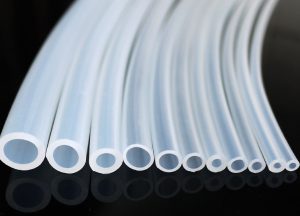
Silicone Material Resistance to Low-Temperature
Low temperature applications are common in industries like: pharmaceutical, food production, brewing, chemical, refrigeration, automotive, petroleum, textile, electronics and aerospace. Low temperature performance is one of the most overlooked properties in seal performance. Exposure to low temperature can contract elastomeric materials, resulting in decreased compression and possible leakage and when lower than their design limit, seals become less flexible and brittle.

Jehbco Silicones JHS clear tubing, FDA approved
A cryogenic seal or otherwise called mechanical seal having a temperature below 0 degrees Celsius. There are series of issues occur for conventional mechanical seals using low temperature products that include being less likely corroded cryogenic fluids but are toxic and are enumerated under the section on “safety and environmental issues”. Almost always low temperature application will be too low for conventional seals. Unless otherwise, an alternate sealing method will be chosen to design a seal which in most cases elastomer take the top spot.
Most of the time cryogenic fluids are poor lubricators, in which mechanical seals successfully rely on the fluid film creation that will now precede issues with conventional mechanical sealing. This can lead to “slip stick” vibration problems where common resolution ended up getting the right materials to use. Consequently during extreme cases cryogenic seals and components needed to be dried first prior to seal installation due to the presence of a lubricant or moisture. This can lead to seal faces shearing or shattering during start-up of machinery.
Furthermore, cold applications freeze any moisture in the surrounding area hence mechanical seals connect the sealed fluid and atmosphere. Which obviously anything within the seal not immersed in the fluid freezes, this happen on mechanical seals with springs outside of the sealed product. Another tendency will occur where the rotating and stationary components are intact, for instance the clamp ring and the gland. On such cases immediate attention is required on face design and / or holder materials of construction to prevent loose or holder distortion.
Due to the earlier mentioned failure applications, study and research continues and it come across the discovery of silicone rubber being able to resist high and low temperatures way better than organic rubbers. Without noticeable change in its properties, silicone rubber can be used with no limit and can excellently withstand cold temperatures. When comparing silicone rubber from organic rubbers, the earlier stay elastic at lowest temperatures when organic rubbers become brittle.
Moreover with silicone rubbers water absorption to roughly 1% only, it can be immersed in water (cold water, boiling water, warm water) for a long time but without significant change on its electrical properties or mechanical strength. Solid silicone sheet rubber’s low temperature flexibility still tops any other elastomer as it remains functional even at lowest temperature. Gaskets and cushioning pads are readily fabricated from solid silicone rubber sheet material. Elastomeric fabrication capabilities counterpart: adhesive lamination, die cutting, water jet cutting of prototypes, slitting to width and production components.
Accordingly, the operating temperature ranges of silicone elastomers are wider than most organic elastomers. Solid silicone rubbers are proven to be more resistant to degradation, do not become soft and irreversibly deform when subjected to low temperatures, naturally flexible at low temperatures which organic elastomers cannot and lastly, can withstand compression set.
For more information on how Jehbco solid silicone rubber reacts to low temperature, browse the website and Contact Us right here.


